Search engine optimization (SEO) is a buzz word for a reason. Everyone and their weird uncle with a website is scrambling to get seen on the internet, and the best way to get seen is through organic traffic.
How does the “organic” come into organic traffic? It doesn’t have to do with GMOs and free-range domain names. Organic simply means traffic that has been acquired through search.
For instance, I typed “super cool amoebas” into Google and looked over the first five results that popped up. One of them was a blog called Growing With Science that had an article about the book “Squish, #1”. I clicked on that blog and became a metric, a single visitor to a site that now has a slightly higher organic traffic count.
Think of the number of times you search for something on Google, Bing or Yahoo. Then think of the number of websites you visit because of your search. Every website you look at rises slightly in the ranks of organic traffic.
I know, I know. This article is about nofollow links in guest posts — there’s a strong connection between those nofollow links and organic traffic, I promise. I’m building a world here.
Search Rank
If you’ve never stopped to wonder how certain websites appear in the top 10 results of a Google search, you’re not a very curious person. Or you don’t have the SEO bone in your body. Either way, since you’re here wondering about nofollow links, it’s time to dig into the concepts of SEO, organic traffic, and how Google (and other search engines) make these decisions.
Google pioneered this program with its algorithm. This algorithm made it so that the websites that appeared first when you searched were those that had the most hyperlinks from other websites.
It’s a self-fulfilling prophecy of sorts, because it typically means the best websites with the most information rise to the top. If you write an astounding article on physics and nature and NASA, National Geographic, and Backpacker Magazine all link to your website — bam, you’ll be in the top results for that search.
Google used to call this system PageRank, which was an official metric by which pages were measured and placed. It has since discarded the term and official program, but the basic principles still function like this.
Including these hyperlinks in an article passed on link “juice” (an unofficial but often used term), or more PageRank to your site, which boosted the receiver’s overall authority on a topic.
It’s also important to note that more official sites, like government websites, well-respected news sites (like the BBC), etc. could give more link juice than others. If you got hyperlinks from the above mentioned sources you’d get a ton of link juice. If the hyperlinks came from lesser known sites it wouldn’t be as effective.
Enter the NoFollow Tag
This system of search makes total sense and is one of the main reasons Google is now the most widely used engine.
All was going along swimmingly until people caught onto this method of ranking and decided to spam the internet with hundreds of thousands (if not millions) of links back their own website through comments, dummy sites, and link farms.
This inflated the results in a terrible way, and Google had to do something about it.
The link juice methodology I described above was, up until this point, true for every single hyperlink on every single website. That’s what made spammers so giddy, and Google so frustrated.
To combat this, the NoFollow tag was invented. This is in distinct contrast to the DoFollow method, which is just the normal method of hyperlinking by which a crawler follows the link and passes on juice.
When you add a NoFollow tag to a hyperlink it makes it so no search rank juice is passed. In short, Google does not value the link in its search results, and therefore spammers are out of luck.
When it was created Google gave fairly specific instructions to web masters: Use the NoFollow tag on all hyperlinks that suck!
The language wasn’t that blunt, of course, but that’s exactly what it meant. Google specifically asked for “untrusted content,” “paid links,” and “crawl prioritization” to use NoFollow tags, the first two being the most important here.
It’s now standard for user-submitted comments and hyperlinks to be NoFollowed on websites, and it’s standard for most Wikipedia links to be NoFollowed.
This process really changed the SEO game for everyone, but there was a specific niche that took a unique hit, one that’s still being sussed out.
Guest Posters
We come at long last to the guest poster. This is your bread and butter — either as an editor or as a guest poster, or as both.
This article if framed around the question of whether or not you have to NoFollow your hyperlinks in your guest posts, so I’m going to take the perspective that you are an editor of a blog, and have to make a call on all the guest posts you publish.
In a word: No. You don’t have to NoFollow your links.
The thing about Google and SEO and all the nooks and crannies of the website world is that it’s ever changing, it’s very hard to regulate, and so much of it is subjective.
Listen, I don’t mean to rag on Google or claim what they’re asking is ridiculous, because some of the time it’s not. However, for a lot of circumstances the hyperlinks included in Guest Posts are perfectly fine to leave as DoFollow links.
That said, Google did lay the law down in 2014 after a (now famous) article by Matt Cutts, then-head director of Google’s web spam team. They targeted MyBlogGuest, a connecting hub that made sure guest posters received DoFollow links in their articles (along with good article placement), and a couple other sites.
By “target” I mean Google removed them from the search engines entirely. Goodbye organic search, right?
That was the worst of it; since then, things have calmed down.
Google can certainly enforce those who are breaking its policies in a highly negative way, offering up penalties that range from following specific instructions to fines to outright bans. You do need to be careful, but the majority of you won’t be playing too much with this sort of fire.
Below I’ll get into some specifics, showing you Google’s perspective, my perspective, and the general concepts held dearly in the guest posting world.
Paid Links
This first topic is a whale in the guest post world. Google specifically asks web masters to NoFollow paid links. This means that any link an outside company has paid for — whether it’s for a printer, a 10-day course on shamanic healing, or anything in between — should not pass any link juice.
To me, and to most publishers that accept guest blogs, this is a perfectly legitimate request. On the one-hand there are the spam-filled masses of the internet, which the NoFollow tag was created to thwart. On the other are the capitalistic, money-filled pockets of hundreds of companies that, if given the opportunity, will absolutely pay to get their site ranked better.
In fact, those companies pay SEO experts to tweak the system as hard as possible to help their search rankings.
In the guest posting realm allowing paid links to have a DoFollow tag is seriously frowned upon because it implies that a company has paid off a guest poster (or you) to “naturally” insert a hyperlink in an article for your readers. In truth, it’s very unnatural — you wouldn’t have linked to that printer if the company hadn’t paid you, so it shouldn’t pass link juice.
If you’re consistently passing link juice to companies that have paid you for it, Google will eventually find out. Don’t do it.
Untrusted Content
This is another of Google’s warnings, and it’s much more generic. What exactly is “untrusted content” in a guest post?
From my perspective it’s any hyperlink that doesn’t quite add up. I’ve had guest posters link to companies that have something to do with the article they’ve submitted, but that link doesn’t provide much value.
I then wonder why the guest poster has included the link. Are they being paid by that company? See the “paid links” section above. Even if they’re not being paid, maybe there is something going on.
In the end, it doesn’t matter what’s going on. You have to ask yourself if the link in question provides a high degree of relevance and information for your readers. If it does, leave it as a DoFollow. If it doesn’t, add the NoFollow tag.
Untrusted content also has to do with the specific source of the website that’s being linked. If the guest post article refers to statistics and links out to a report generated by Inc, it’s probably legitimate. Of course you need to do your editorial role and look at the link itself, but by the nature of it being a large, well-respected website, you can be more assured that the content on that site is safe, and therefore deserves the DoFollow link juice.
However, if the statistics come from a website you’ve never heard of, be wary. If you go to that website and advertisements pop up, strange URL structures are used, and no studies are cited for their sources, it is obviously untrustworthy.
You should probably not even link to that source, and ask the author of the guest post why they used such a source.
Untrusted content can also fall in the middle of the above scenarios. A site could look decent, but you’ve never heard of it. You can be unsure. In this case I’d leave the hyperlink and slap a NoFollow tag on it. It will never hurt you to NoFollow a hyperlink, but it can hurt you to DoFollow a hyperlink that is terrible, or construed by Google as untrustworthy.
Relevancy
As I mention above, the real question when it comes to hyperlinks is how relevant they are. Google loves articles that contain hyperlinks — it’s almost a requirement, like an academic citation, that shows your publication participates in the online community.
However, think hard about what links you include. Don’t link to Sony’s website every time you write Sony. People know who that is, and there’s no need to show them.
However, if the guest post is referring to a specific phenomenon in the night sky, linking to an article that explains the Aurora Borealis in more depth is relevant. It’s also useful to your readers.
Google wants readers to benefit more than anything.
The NoFollow Decision
The NoFollow decision typically comes down to principles.
Upon examining (or creating) any guest post that has hyperlinks you should fairly quickly be able to determine if the link is relevant for your readers, if it’s trustworthy, and if someone has been paid for it.
You can always ask the author of said post why they included it, and if their answer is at all sketchy, take the link out.
I find, for myself and my blogs, that I try to only include links in articles that are relevant in the first place. These should get link juice because they are solid.
The rest should probably be taken out.
 ContentPowered.com
ContentPowered.com
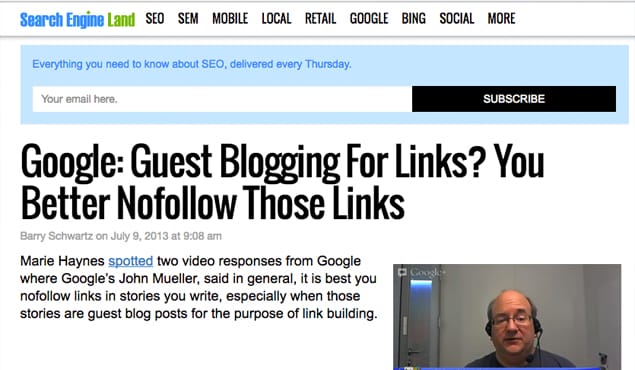
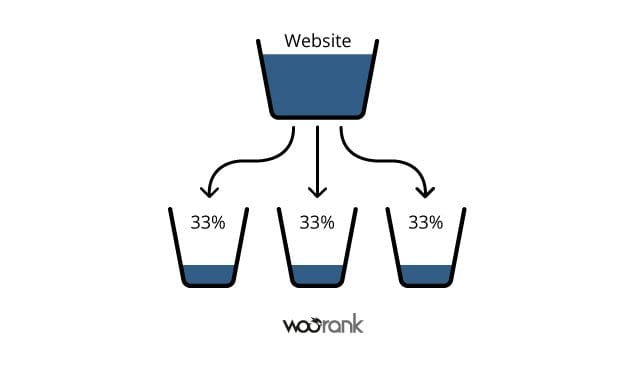
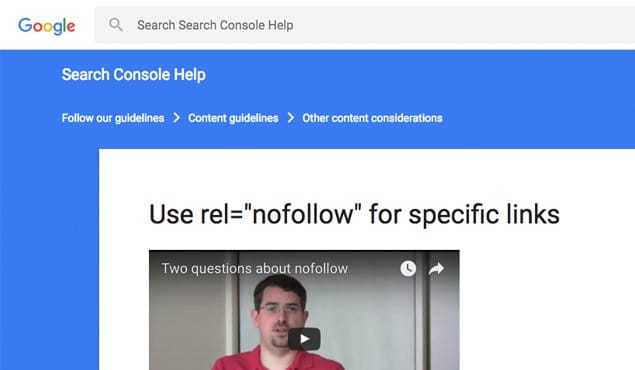
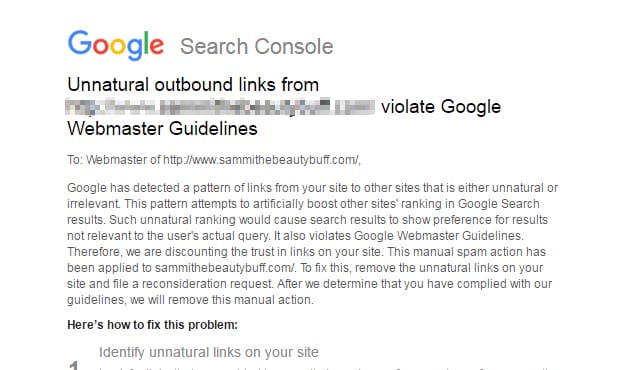


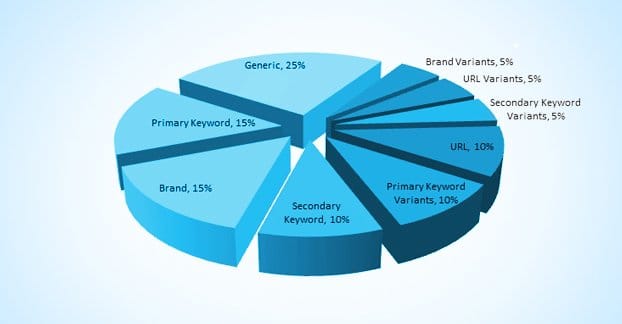

Green World Investor
says:Superbly written! Thanks answered a lot of my questions